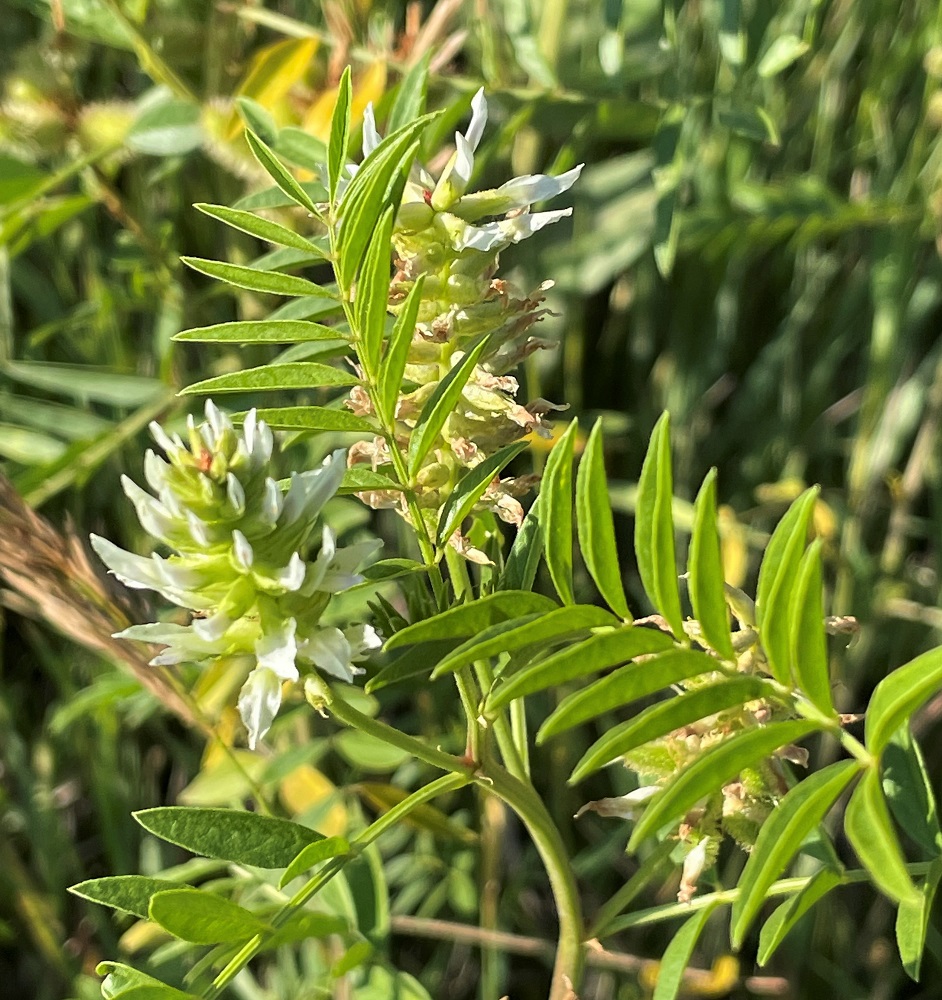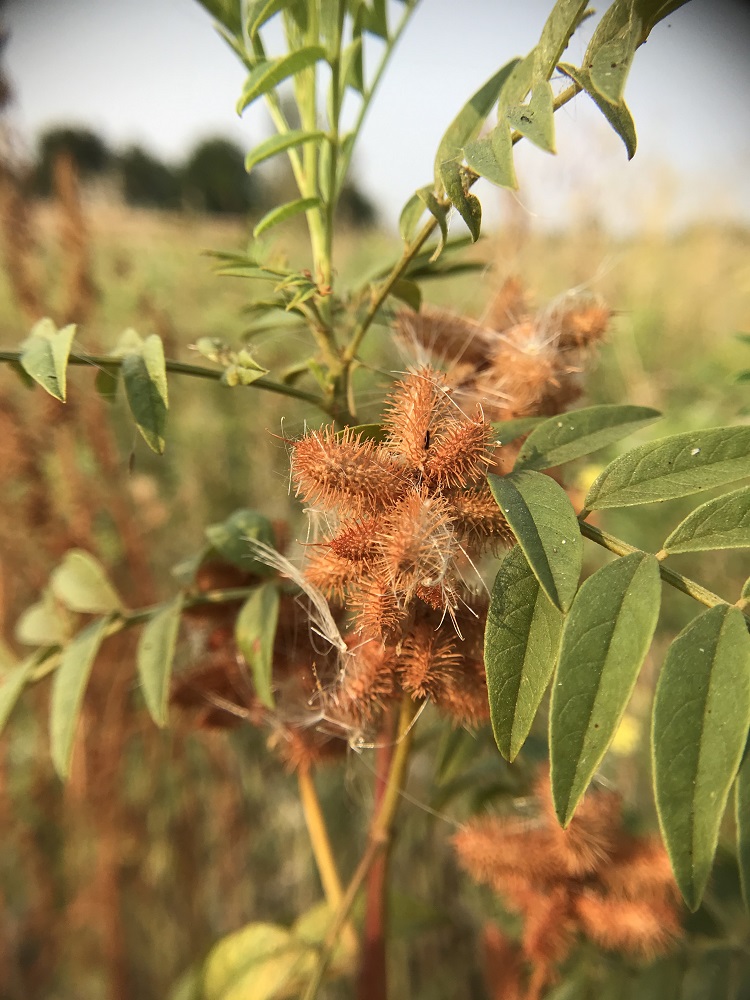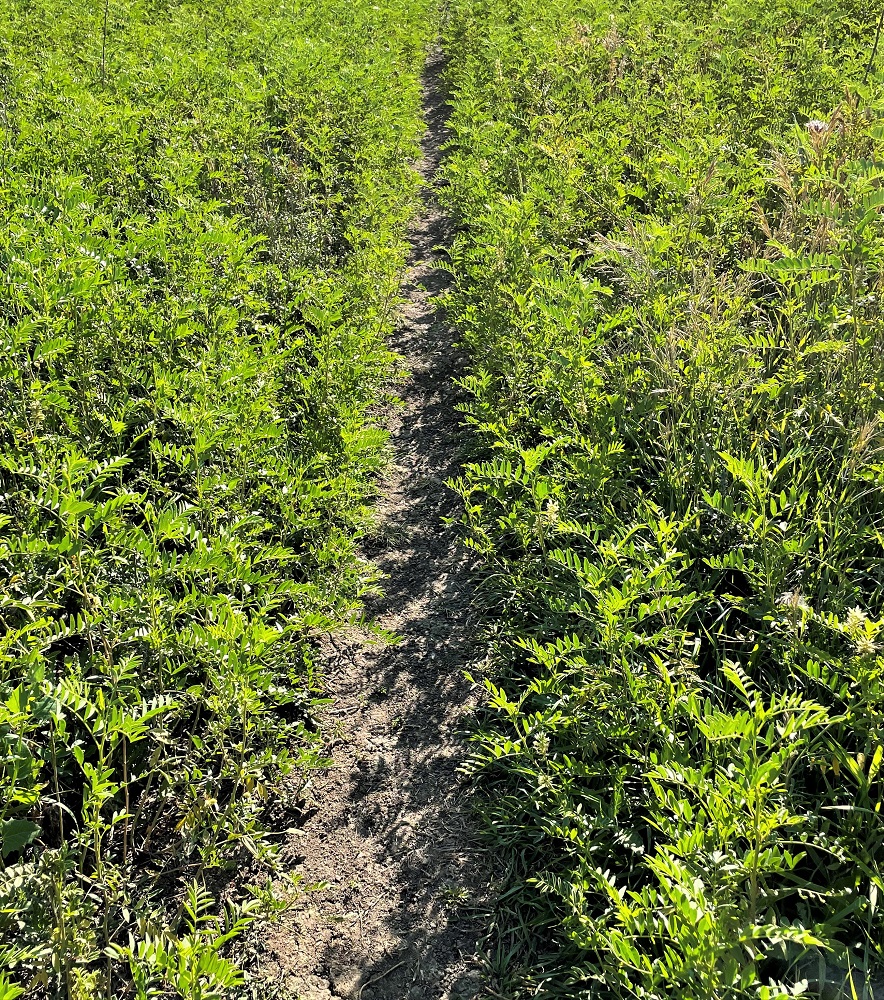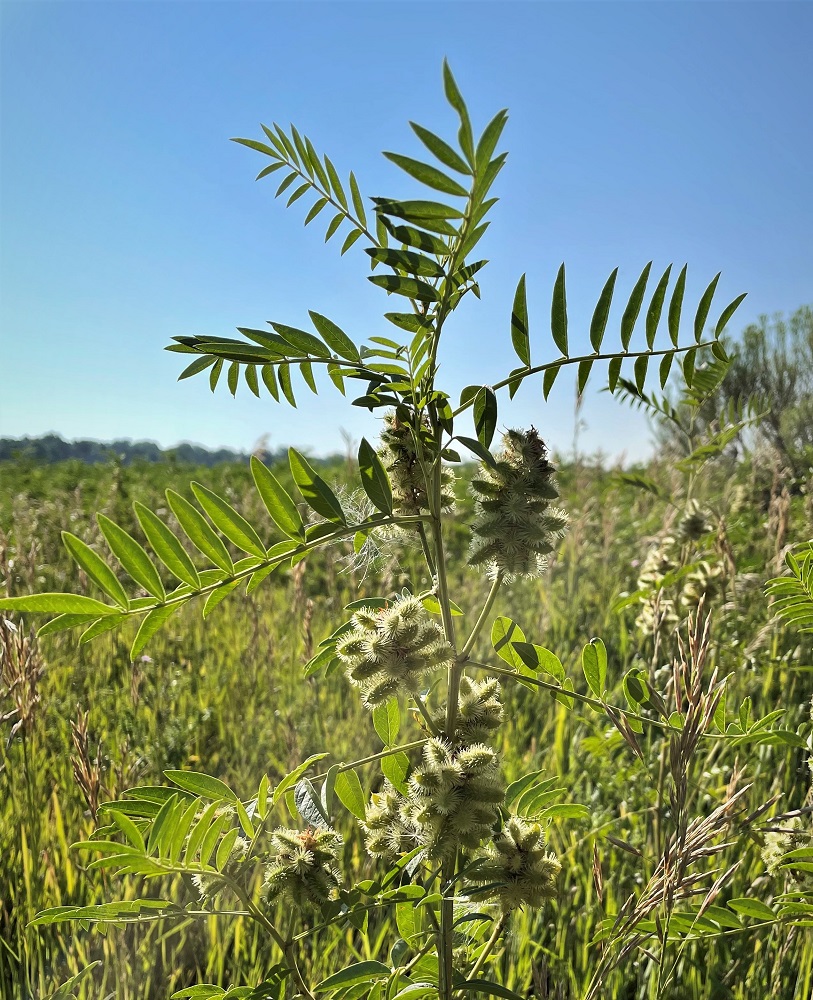The Wild Licorice shrub (sometimes referred to as American Licorice shrub) grows up to about 4 feet tall and is frequently found in patches. It is most often evident when you discover that you have many Velcro-like seed pods stuck to your clothing after walking along a path in late summer through winter. It is common and widespread throughout Colorado.
These shrubs are identified by their leaf pattern – 7-19 leaflets along a stem that are arranged like two combs stuck back to back (referred to as a pinnate leaf), along with their bur-like seed pods which are covered with hooked prickles. They are found along streams, in ditches and in disturbed areas. They prefer riparian zones along streams.
In addition to spreading by the seeds in those burs, Wild Licorice plants spread by rhizomes (underground creeping stems). Although two southern European species have deep fleshy aromatic roots which contain the compound used in licorice candy, the roots of the native Wild Licorice plants found here are woody and don’t smell or taste like licorice.

Scientific name and Plant Family Information
The Scientific name for the Wild Licorice shrub is Glycyrrhiza lepidota. Glycyrrhiza comes from the Greek Glycyr for sweet and Rhiza for root.
Lepidota is from botanical Latin for scaly, which refers to scales that develop on the leaves.
It is in the plant family Fabaceae (pea), which also includes peas, beans, peanuts, alfalfa and honey locust trees.
Plants in this family have distinctive 5-petal flower heads. Most also have pinnate leaves (a stem with leaflets on either side of the stem).
Pea family plants also are known for distinctive pea-like pods – although the Wild Licorice shrub is unusual by having the bur-like coverings for the seeds.
Most peas are known as “nitrogen-fixing” plants, that is they add nitrogen to the soil when they decompose. That is very beneficial for growing other plants in that soil.
The Pea plant family is the third largest family of flowering plants in the world (after Orchids and Sunflowers).

Through the Seasons
Wild Licorice shrubs leaf out in the spring. White flowers follow in July-August and require pollination by bees in order to form seeds. The seed pods start out green in late August and turn brown by September. The Velcro-like seed pods enable the seeds to be spread by sticking to animals’ fur and people’s clothes and being transported to where they are brushed off.

Native or Non-Native?
Wild Licorice is native to this area and grows along streams and ditches, roadsides and in disturbed areas. It is found over most of the state, at elevations of 3,800 to 8.600 feet.
Where to find in Willow Spring Open Space
There is a large patch of Wild Licorice south of the Englewood Dam on one of the social trails on the west side of the Willow Spring Open Space. There are also Wild Licorice plants mixed in with various patches of milkweed throughout the Open Space.

Did You Know?
Wild Licorice root has been used medicinally for inflammatory upper respiratory conditions, painful menstruation and to stimulate adrenal functions.
References and Further Reading
- Botany in a Day: The Patterns Method of Plant Identification, by Thomas J. Elpel, 1967
- Flora of Colorado, by Jennifer Ackerfield, 2015
- Colorado Native Plant Database Data Portal, Colorado State University
- Colorado Flora Eastern Slope: A Field Guide to the Vascular Plants, 4th Edition, by William A. Weber and Ronald C. Wittmann, 2012
- Wildflowers of the Rocky Mountain Region, Denver Botanic Gardens, 2018


